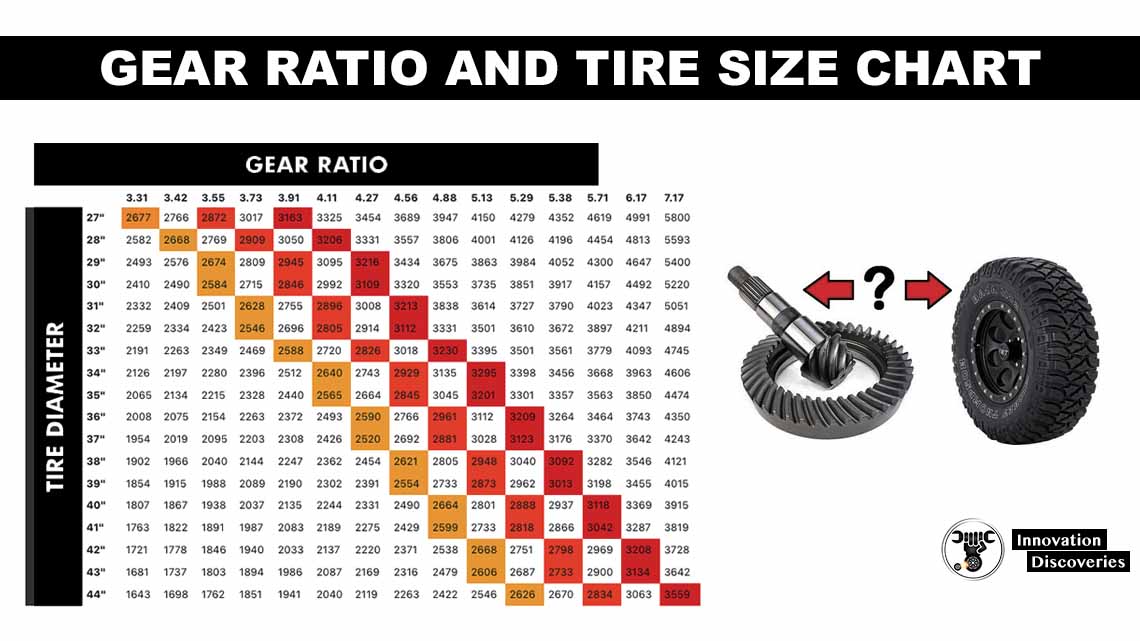The intricate relationship between tire size and gear ratio is a fundamental aspect of vehicle performance that often goes unnoticed by the average driver. This connection plays a critical role in maximizing efficiency and optimizing the overall driving experience. Understanding how tire size influences gear ratios can not only improve your vehicle’s performance but also contribute to a more sustainable driving practice.
Every vehicle operates on a system where various components work in harmony. Among these, the tires are the only parts that directly interact with the road. Their dimensions dictate numerous factors, including handling, stability, fuel efficiency, and acceleration. The gear ratio, on the other hand, determines how much power from the engine is transmitted to the wheels. A proper match between tire size and gear ratio can result in enhanced performance, leading to a more economical and environmentally friendly operation.
The first step toward understanding this dynamic is to grasp the meanings of gear ratio and tire size. The gear ratio is defined as the ratio of the number of teeth on two gears that are meshed together. In vehicles, it is most commonly found in the differential or the transmission system. For instance, a gear ratio of 3.55:1 indicates that for every 3.55 revolutions of the driveshaft, the wheels will complete one full revolution.
On the other hand, tire size reflects its diameter and width, greatly influencing how a vehicle performs. For instance, larger tires may enhance a vehicle’s ability to negotiate rough terrain but could adversely affect fuel economy due to the increased rolling resistance. Conversely, smaller tires can improve fuel efficiency but may not provide the same level of traction and control.
As vehicles undergo modifications, such as changing tire sizes, the corresponding gear ratio must also be recalibrated to maintain an equilibrium in performance. When the diameter of the tires increases, the vehicle covers more ground with each revolution, which can lead to a mismatch with the existing gear ratio. If a driver neglects this correlation, it can result in suboptimal engine performance, reduced fuel efficiency, and uneven wear on both tires and drivetrain components.
The relationship between gear ratio and tire size can be articulated through a tire & gear match chart, which guides vehicle enthusiasts in selecting the appropriate combination for their needs. These charts often delineate various tire sizes alongside their compatible gear ratios. For example, if you opt for larger tires on your truck, you might find that the optimal gear ratio shifts, requiring a replacement if you desire to maintain optimal acceleration and fuel economy.
The significance of adhering to recommended combinations extends beyond mere performance metrics. Notably, vehicles equipped with mismatched tire and gear ratios tend to experience increased emissions and reduced fuel efficiency. This consequence directly impacts the environment, contributing to higher carbon outputs and escalating the urgency for more eco-friendly alternatives in transportation.
Optimizing tire and gear match can also lead to a more enjoyable driving experience. When the gear ratio is calibrated to accommodate the tires, drivers often report enhanced responsiveness, improved throttle sensitivity, and overall better driving dynamics. Thus, engaging in proper tire and gear matching transcends mere technical adjustments; it transforms the act of driving into an efficient and pleasurable endeavor.
A key factor to consider is the type of driving one engages in. For those who prioritize off-roading adventures, selecting larger tires might be beneficial for navigating rough terrain. However, the resulting change in gear ratio should be carefully evaluated. Similarly, individuals who frequently drive in urban settings may prefer smaller tires that yield better fuel economy and handling without sacrificing performance. Each scenario necessitates a thoughtful analysis of how tire size and gear ratios interact and affect driving conditions.
The future of automotive technology emphasizes efficiency, sustainability, and eco-friendly practices. As climate-conscious consumers increasingly gravitate toward vehicles that align with these values, understanding tire and gear relation becomes integral to making informed decisions. Implementing precise matches can significantly reduce your carbon footprint while preserving vehicle performance and longevity.
As we reflect on the connection between tire size and gear ratio, consider this: each time you drive, you are making choices that impact not only your vehicle but also the world around you. The science of tire and gear matching encapsulates more than just gears melding together; it embodies a philosophy aimed at harmonizing human activities with nature’s parameters.
In conclusion, the intricate tapestry woven from the threads of tire size and gear ratio carries implications that extend beyond vehicle performance. It encapsulates a burgeoning awareness of environmental stewardship in auto engineering. With every mile you drive, the choices you make concerning tire and gear alignments ripple through the broader environmental landscape. Equip yourself with knowledge and curiosity; by doing so, you actively become an agent of change in securing a sustainable future for vehicular travel.
